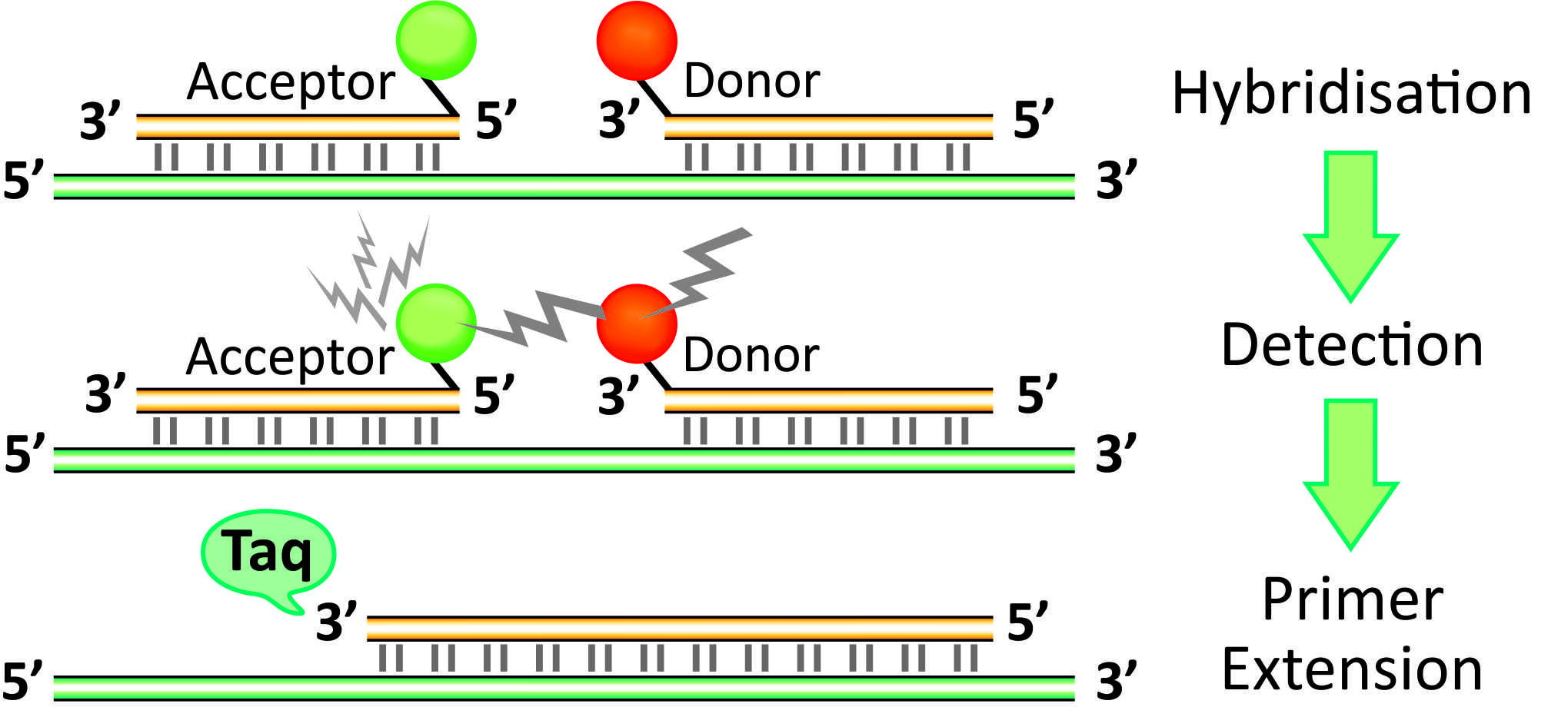Hybridization probes (FRET probes)
FRET probes are hybridization probes based on the Förster resonance energy transfer (FRET). FRET probes are a pair of fluorescent probes placed in close proximity on the targer. Fluorophores are so chosen that the emission spectrum of one overlaps significantly with the excitation spectrum of the other. During FRET, the donor fluorophore excited by a light source, transfers its energy to an acceptor fluorophore when positioned in the direct vicinity of the former. The acceptor fluorophore emits light of a longer wavelength, which is detected in specific channels. The light source cannot excite the acceptor dye. Usually it’s a pair of oligonucleotides where one has 3’-Donor Dye and another with 5’ -Acceptor dye.
- Applications: RT-qPCR, DNA copy number measurement, pathogen detection assays, SNP genotyping.
- Multiplexing
- Choose from a wide variety of reporter and quencher combinations
Recommended FRET Pair dyes combinations
| Acceptor Dye | Donor Dye |
| ROX | FAM |
| Cy5 |
0

